Cyanotype Object View
Cyanotype sensitizer is typically applied directly to a paper support. Fabrics were also used and, less commonly, formulas were available for the application of sensitizer to glass, ceramics and films. Cyanotypes could be printed on nearly any surface, though it was recommended to use artists’ or photographic papers which were free from impurities. Today it is important to avoid papers containing alkaline materials such as buffering agents found in acid-free paper. Sizing decreased the shelf life of sensitized papers. However many recipes for sizing hand coated papers were available including arrowroot and gelatin. Rarely, binders (albumen, collodion and gelatin) were used.
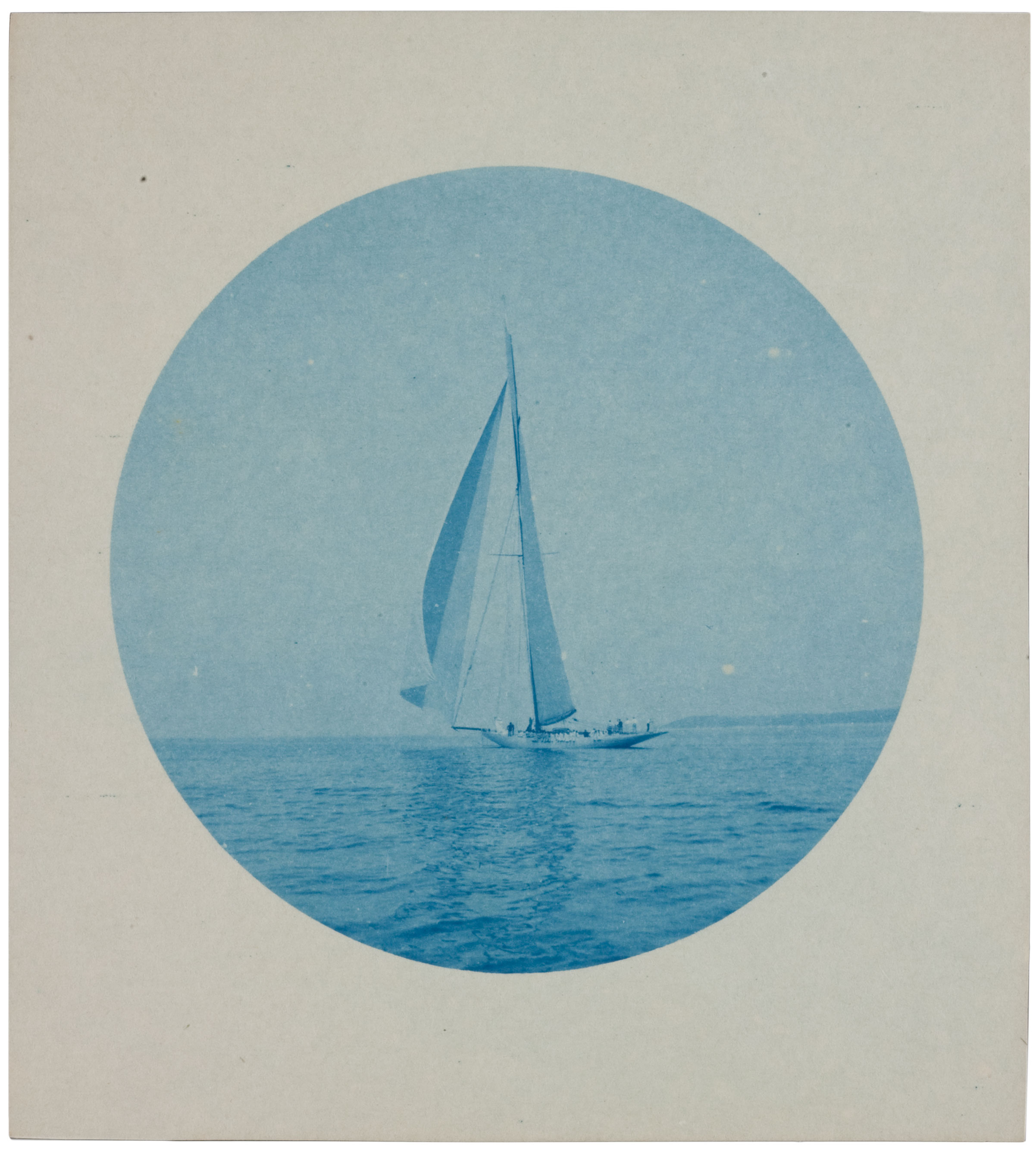
Cyanotype printed on highly calendared commercial paper.
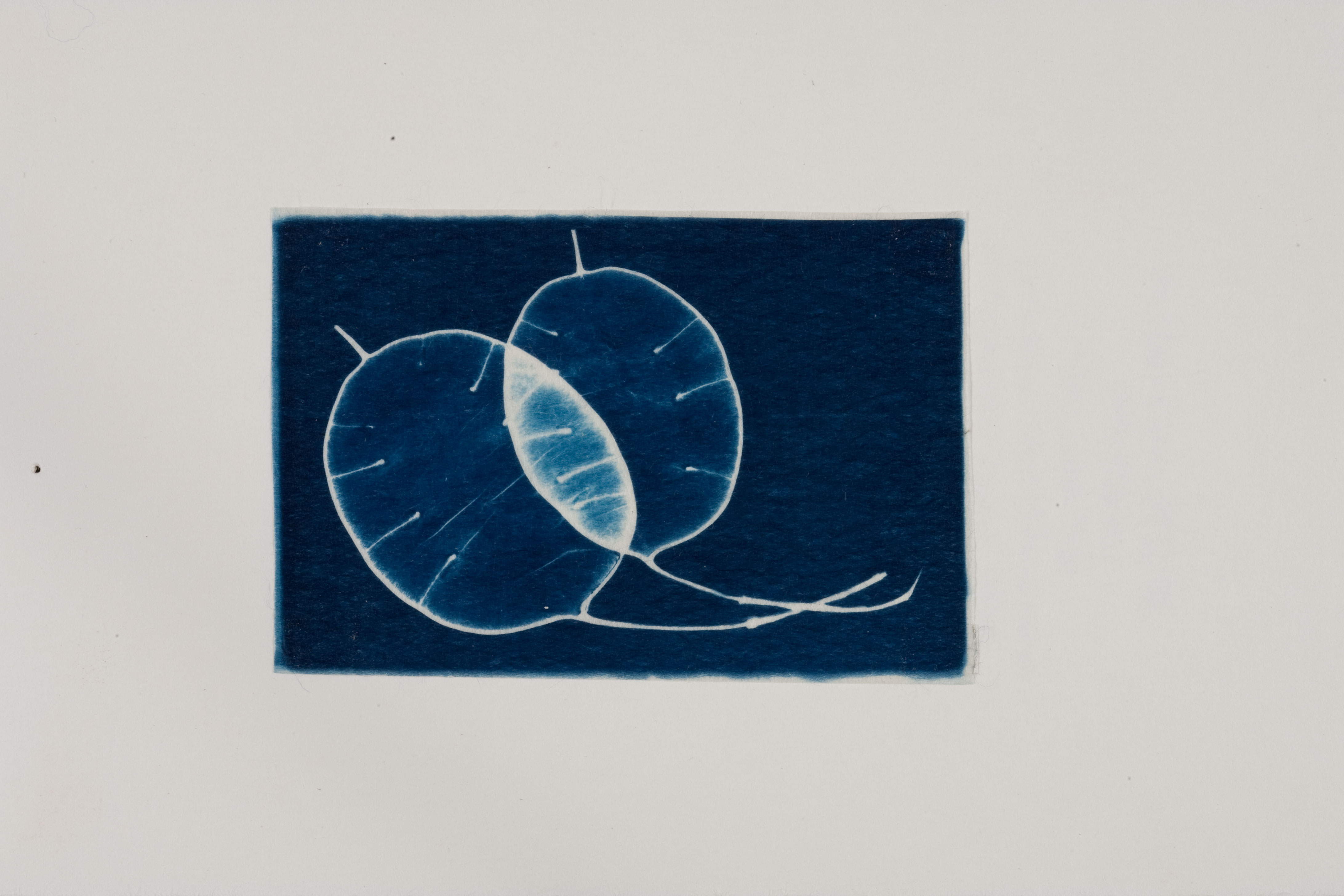
Cyanotype printed on hand coated Japanese paper.
The image tone of cyanotype prints is almost always the distinctive Prussian blue. However, though few historic examples exist, prints could be toned a multitude of colors. A common method was to “bleach” the print in a dilute alkali solution then apply gallic or tannic acid to yield a purple-brown color. A similar effect was achieved by a bath in teas containing tannis. Both methods tended to stain the highlights of the print. A greenish black tone could be produced by a borax, catechu and water bath. In fine art prints, cyanotypes were combined with other processes such as gum bichromate, platinum and palladium. The blue tone is evident within such images.
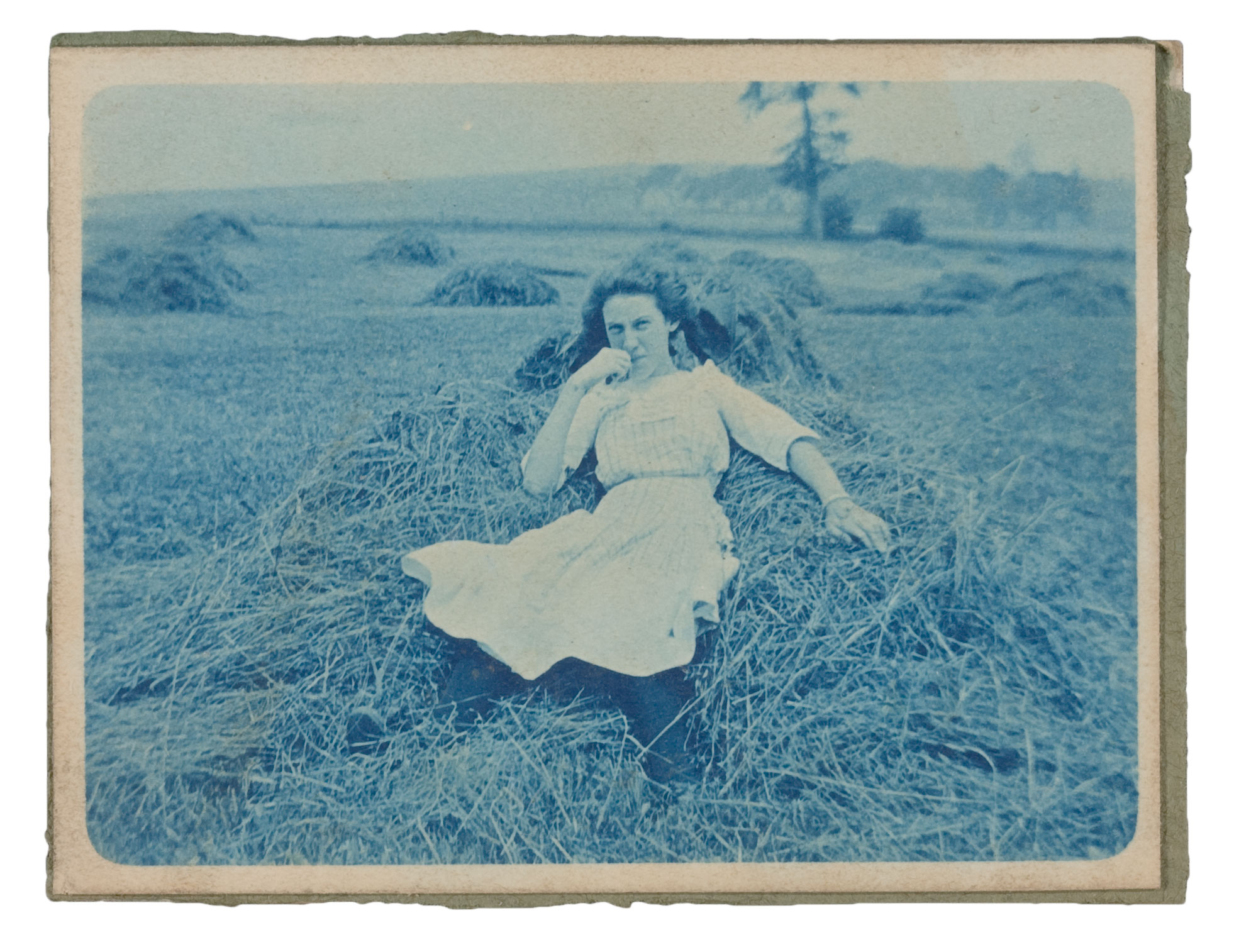
With rare exception, cyanotypes are always Prussian blue.
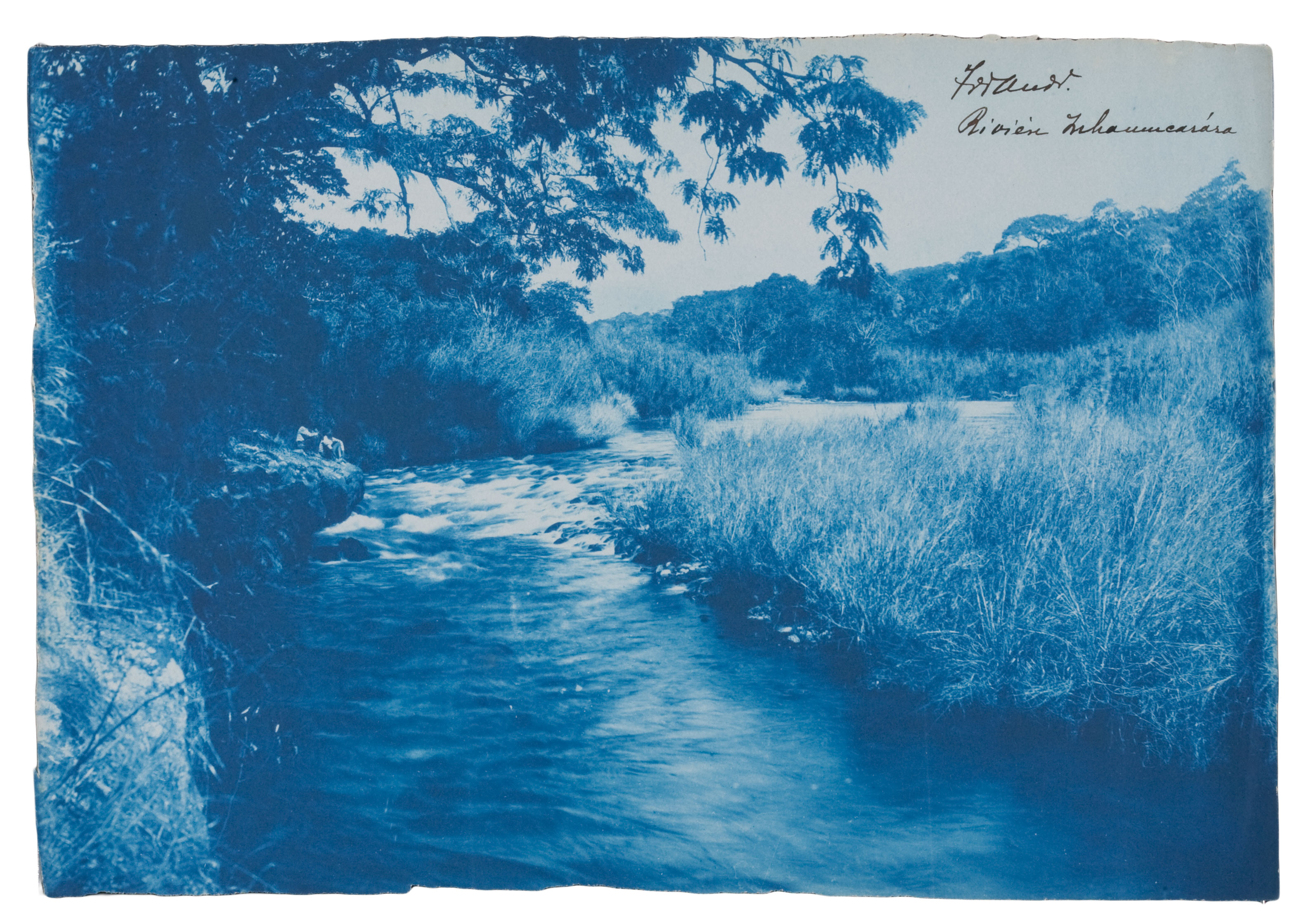
River and lake scenery was considered suitable subject matter for the cyanotype’s blue tone.
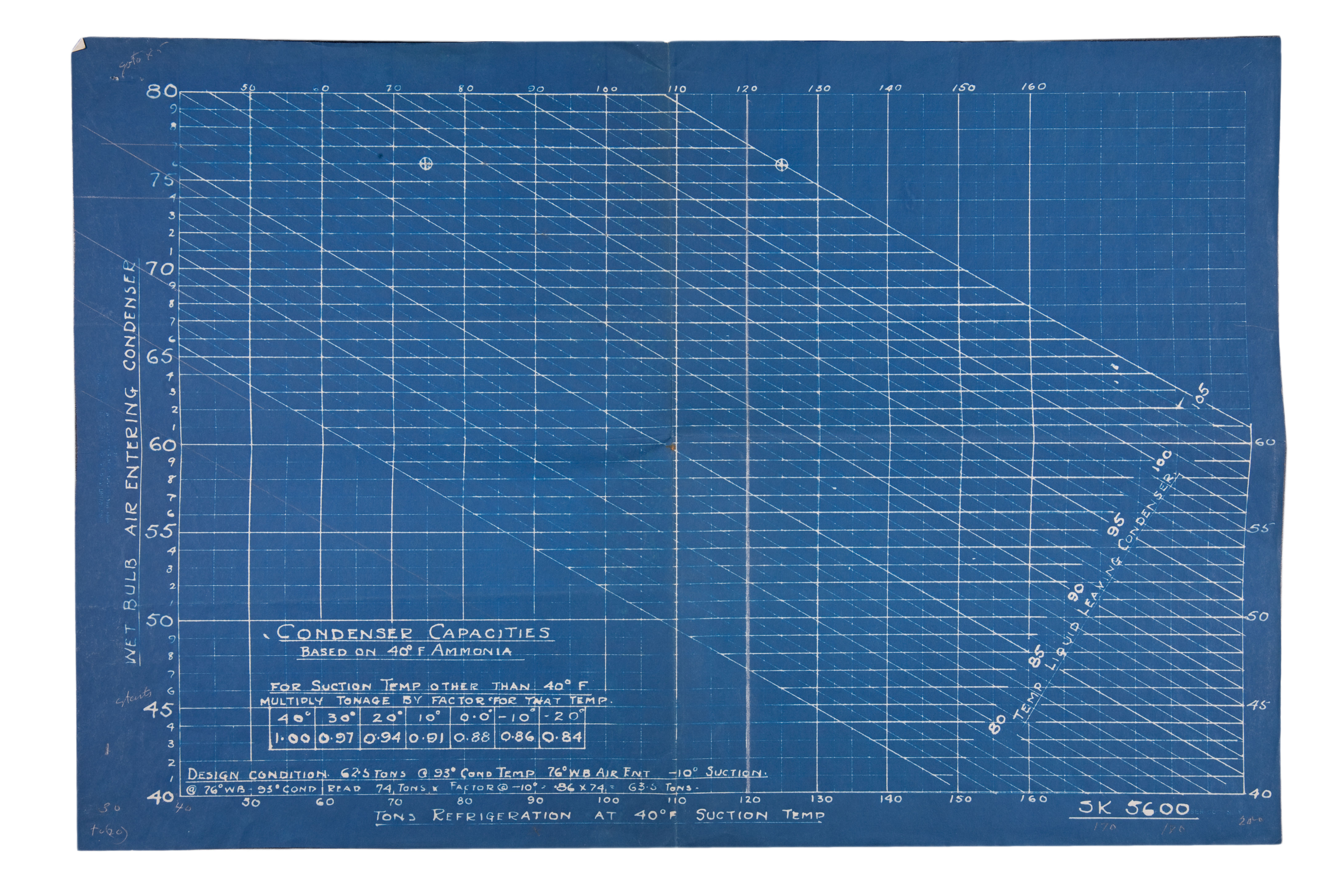
The cyanotype process was used primarily for line drawing from the 1920s to the 1950s.
Cyanotypes were contact printed. Print sizes will correspond with gelatin dry plate negatives, sheet film and, most commonly, early hand camera negative format sizes. They may also be photograms, often of plant life. Commercial cyanotype papers (photographic) were sold in a range of sizes, such as 2 ¼ inches x 2 ¼ inches to 3 ½ inches x 12 inches. They were often cut down to fit in albums. Home-printed cyanotype postcards were also common. Occasionally prints were mounted; recommendations for boards included dark blue, grey or a complimentary hue such as red.
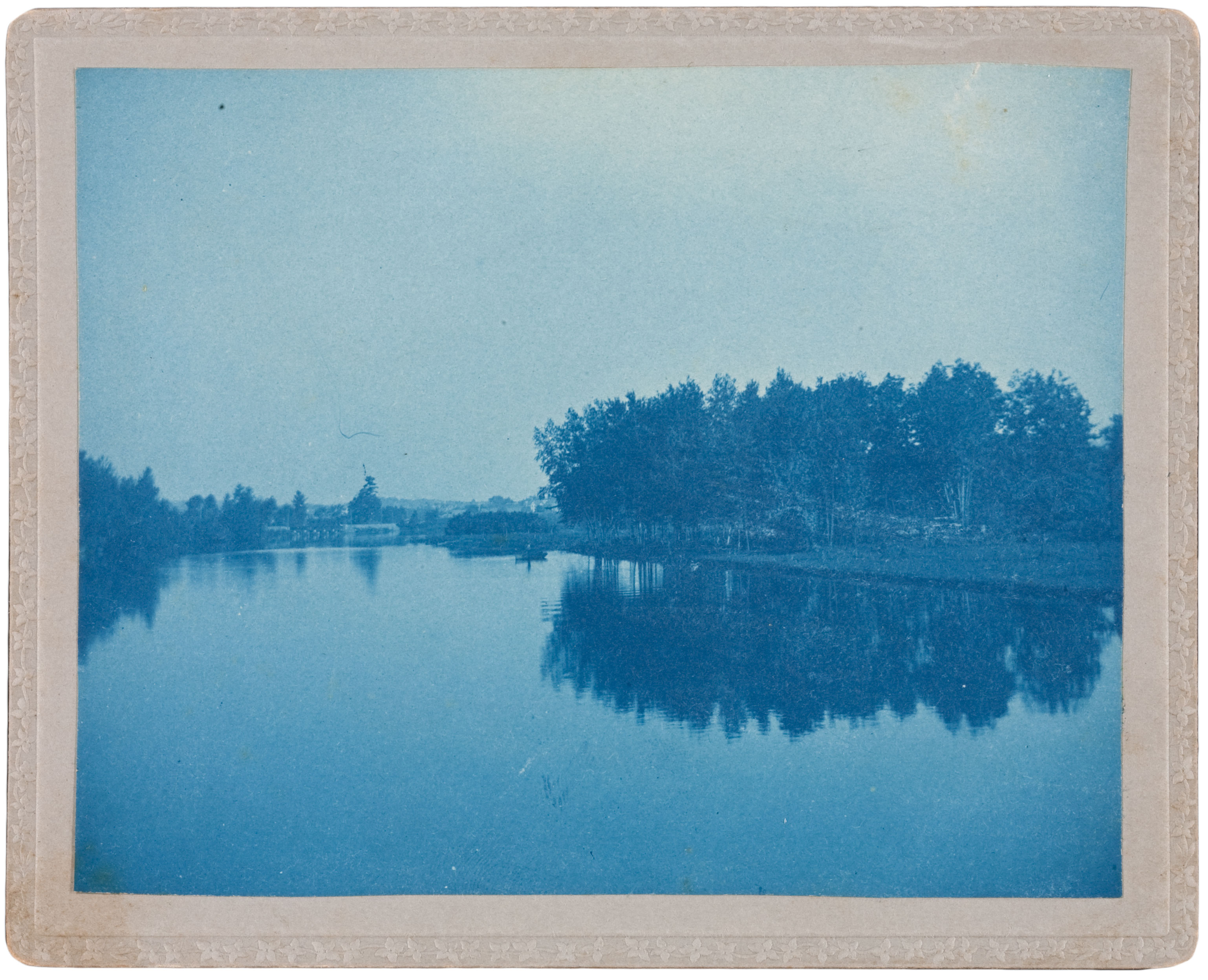
Soft grey was among the recommended mount tones for cyanotype prints.
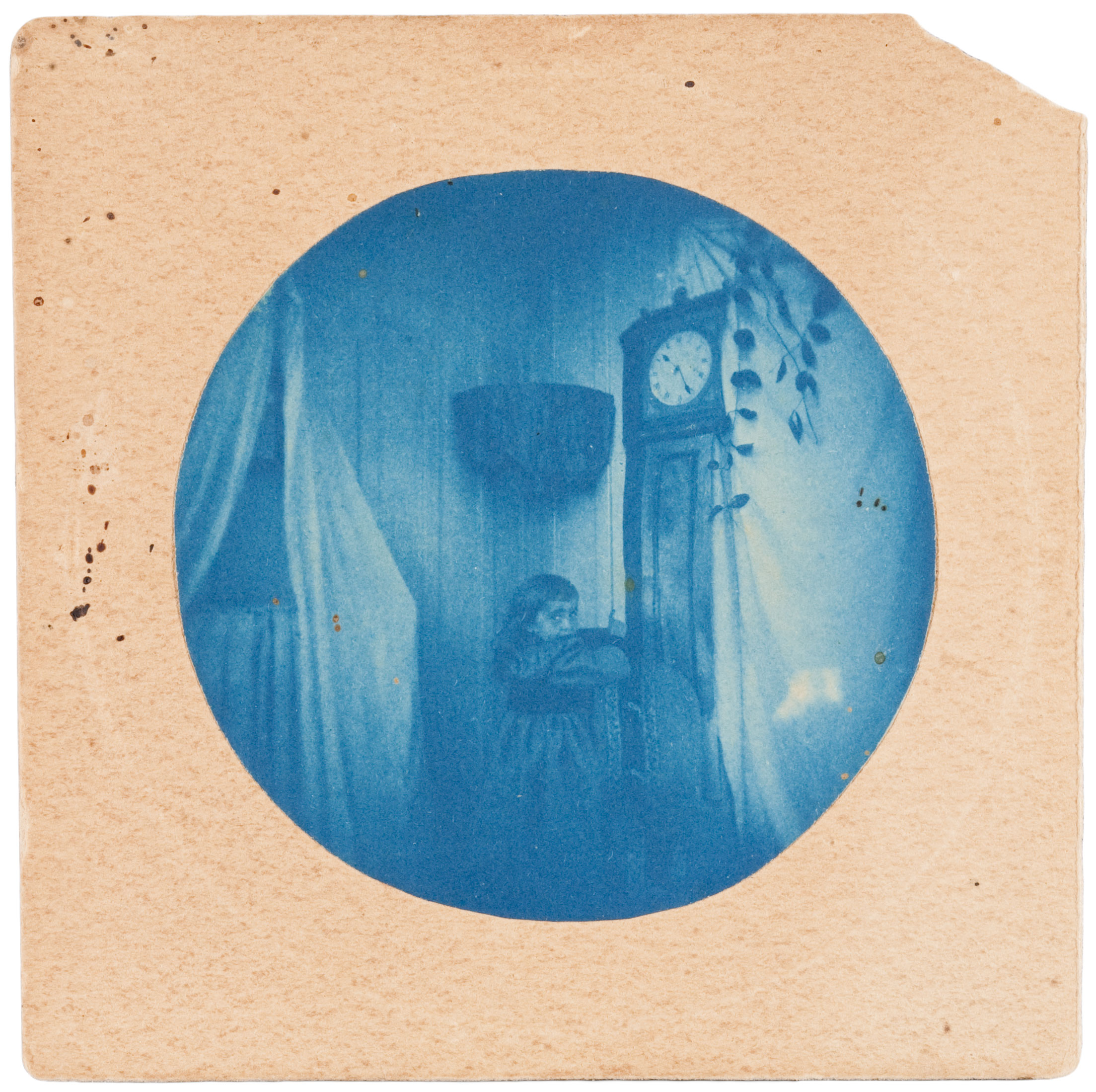
An amateur print made from a circular Kodak No.1 negative.
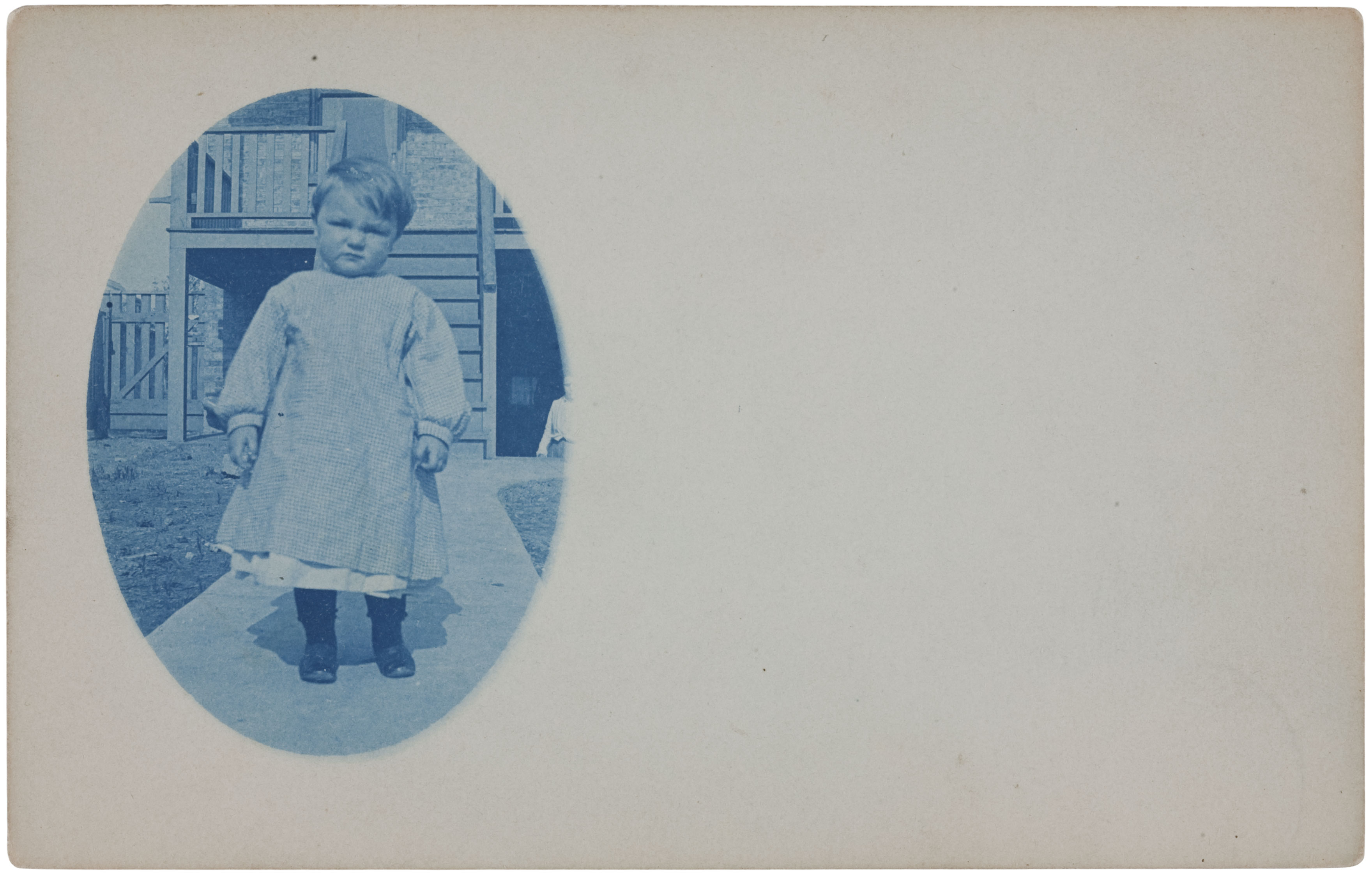
An example of a real photo postcard printed on Eastman’s Ferro-Prussiate postcard paper.
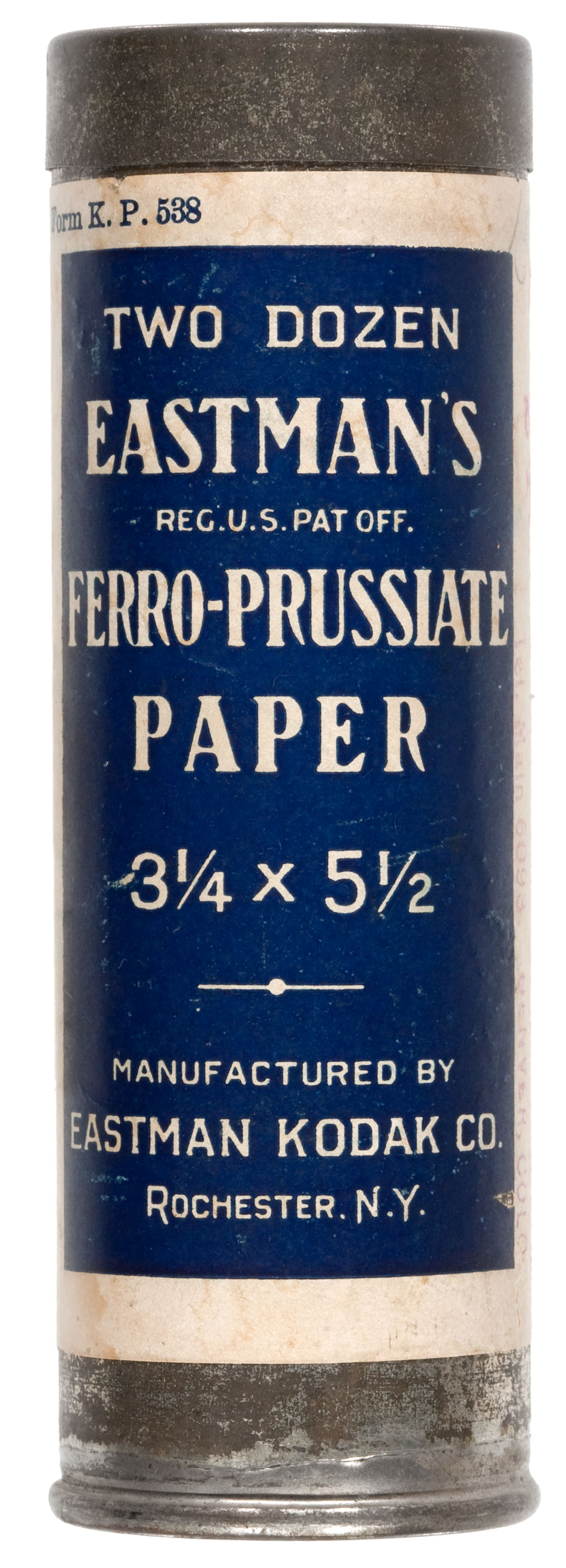
A sample of commercial cyanotype paper for photographic use from 1908. Amateurs used such products to print from their snapshot negatives.
Many cyanotypes were produced by amateurs for albums and postcards. Those that were professionally printed often served as proofs and negative registers. Eastman’s Ferro-Prussiate postcards have blue text on the back. Snapshots may have traces of album paper and glue indicating they were once in an album. Professional images may have duplicates rendered in another process such as silver. Famously Henri Le Secq created reprints of his negatives in cyanotype to replace faded silver prints made earlier in his career.
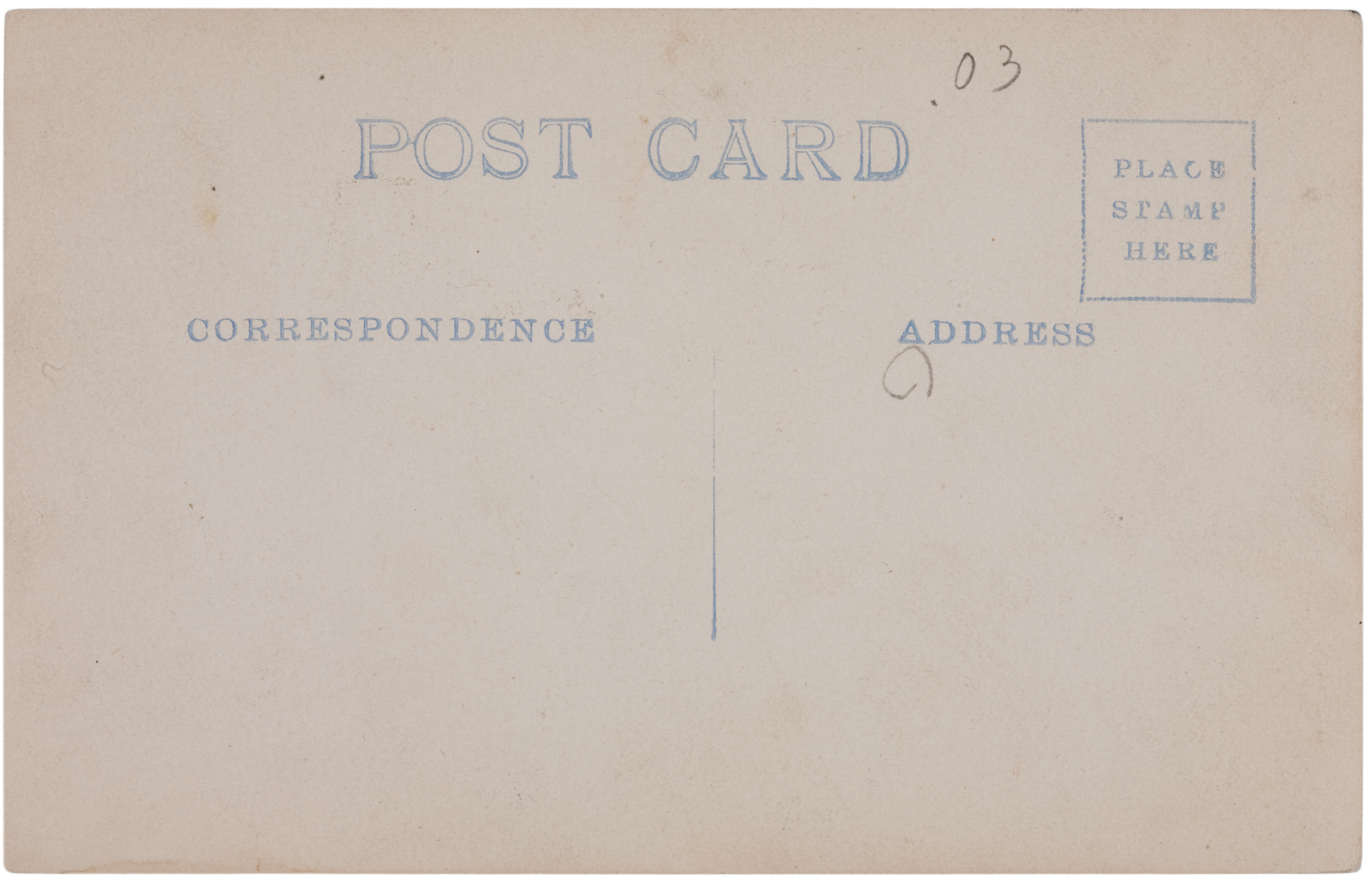
The text and markings applied to the back of cyanotype postcards were printed in blue ink
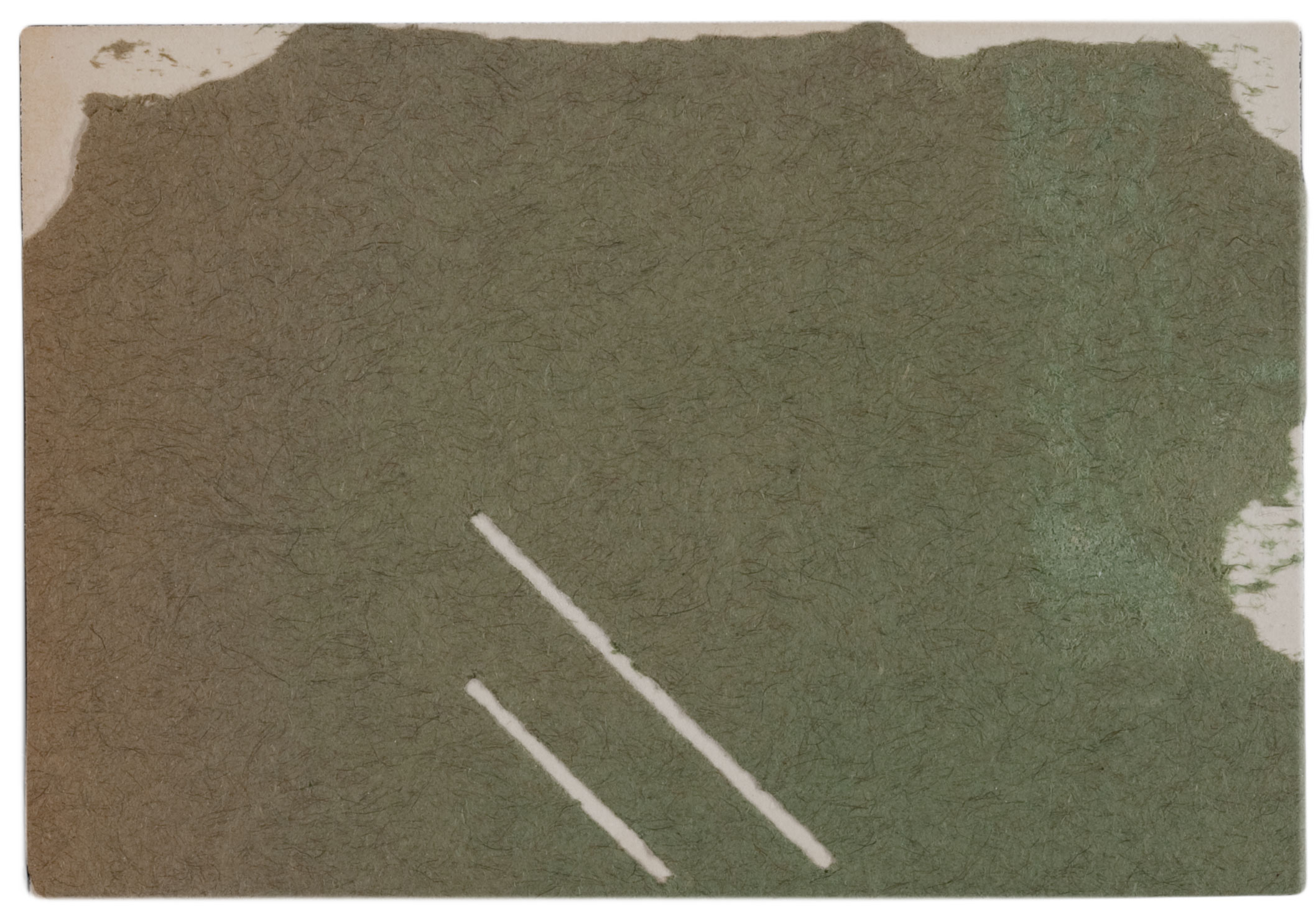
Note the traces of paper and adhesive indicating this print was once part of an album